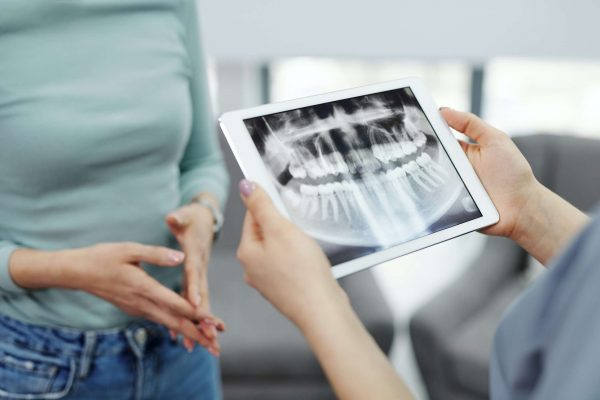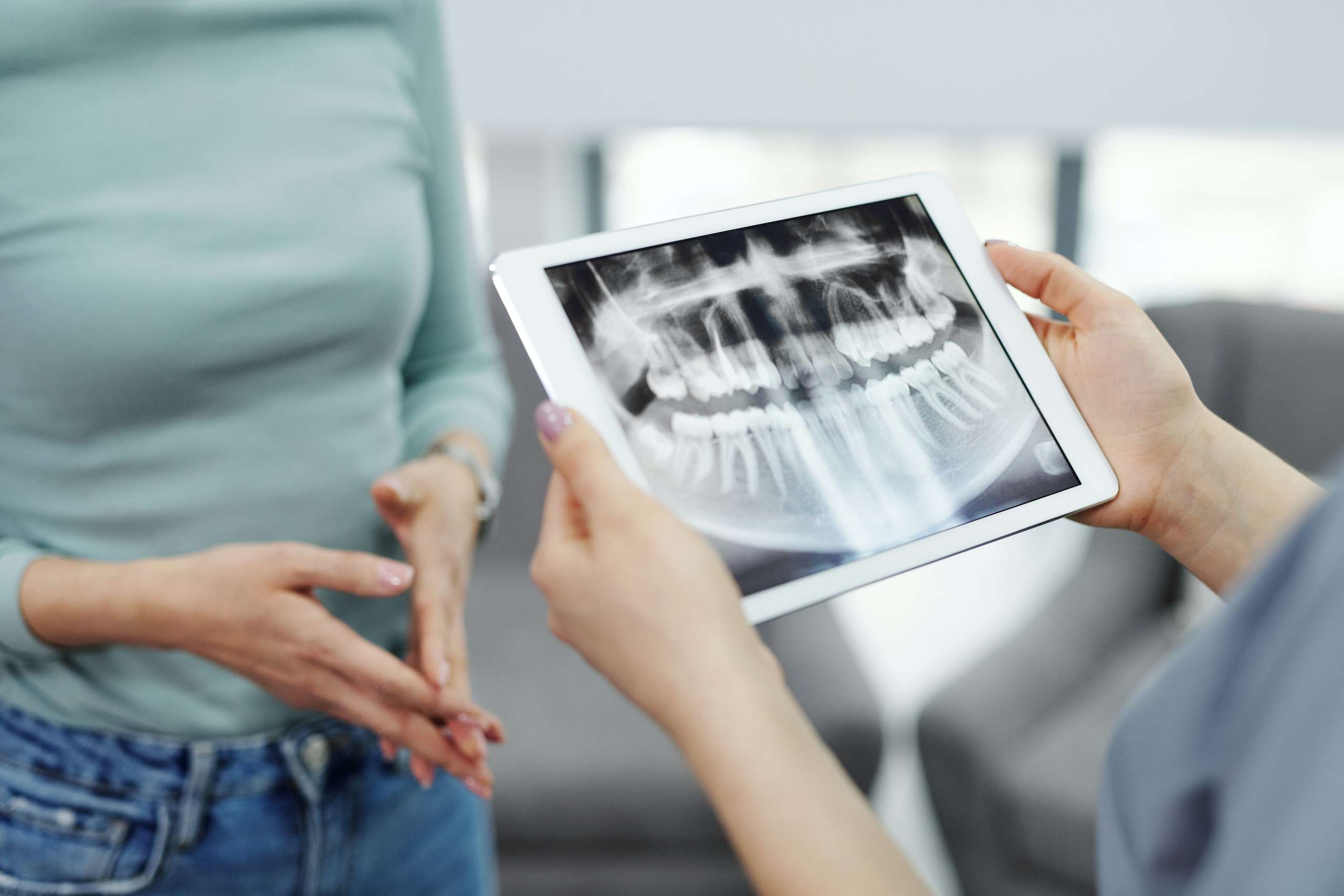The Benefits and Risks of Bone Grafting for Dental Implants
Bone grafting is a surgical procedure that involves the transplantation of bone tissue to replace or augment missing or damaged bone. When it comes to dental implants, bone grafting is often required to provide a stable foundation for the implant to be placed. This is because the quality and quantity of the existing bone in the jaw may not be sufficient to support the implant.
Bone grafting involves taking bone tissue from another part of the patient’s body (autograft) or using donor bone tissue (allograft or xenograft) to supplement the existing bone in the jaw. The graft is then allowed to heal and fuse with the existing bone, creating a more stable foundation for the dental implant.
While bone grafting for dental implants is a common procedure, it is not without risks. Complications can occur during or after the surgery, and the patient may experience pain and discomfort during the healing process. However, the benefits of bone grafting generally outweigh the risks, as it can lead to improved stability and longevity of the dental implant, better oral health outcomes, and potential for future implant options.
In this article, we’ll explore the benefits of bone grafting in more detail, as well as the risks that patients should be aware of.

The Benefits of Bone Grafting for Dental Implants
Bone grafting is a surgical procedure that involves the transplantation of bone tissue to replace or augment missing or damaged bone. In the context of dental implants, bone grafting is often necessary to provide a stable foundation for the implant to be placed.
Bone grafting can provide several benefits for patients who require dental implants, including:
1. Increased Stability and Longevity of Implants
When the quality and quantity of the existing bone in the jaw is insufficient, bone grafting can provide additional support for the dental implant, increasing its stability and longevity. The implanted bone tissue can provide a more stable base for the dental implant, which allows it to withstand the pressure and force of chewing, preventing implant failure or damage over time.
In addition, bone grafting can help distribute the force of chewing more evenly across the jaw, reducing the risk of bone loss and implant failure over time.
2. Improved Aesthetics and Function of Teeth
Bone grafting can help restore the natural shape and contour of the jawbone, which is important for maintaining the proper alignment and spacing of the teeth. By creating a more stable base for the implant, bone grafting can also improve the function of the teeth, allowing patients to bite and chew more comfortably and effectively.
Dental implants can be custom-made to match the shape, size, and color of the patient’s natural teeth, providing a more natural and aesthetically pleasing appearance.
3. Better Oral Health Outcomes
Bone loss in the jaw is a common side effect of tooth loss, which can lead to a variety of oral health problems such as gum disease, tooth decay, and further tooth loss. Bone grafting can help prevent bone loss in the jaw, providing better oral health outcomes and reducing the risk of future dental problems.
By providing a stable foundation for the implant, bone grafting can also help preserve the surrounding teeth and gums, reducing the risk of infection and other complications.
4. Potential for Future Implant Options
For patients with severe bone loss in the jaw, bone grafting can provide the necessary foundation to support more advanced implant options, such as zygomatic implants or All-on-4 dental implants. Bone grafting can also be used to augment the existing bone in the jaw, making it possible to place additional dental implants in the future if needed. This provides patients with more options for dental restoration and can improve their long-term oral health outcomes.
The Risks of Bone Grafting for Dental Implants
While bone grafting for dental implants can provide significant benefits for patients, it is important to be aware of the potential risks and complications associated with the procedure.
Some of the risks of bone grafting for dental implants include:
1. Infection and Complications
As with any surgical procedure, there is a risk of infection, bleeding, or other complications during or after bone graft surgery. Some patients may also experience complications such as nerve damage or damage to surrounding teeth or gums. Patients can minimize their risk of infection and complications by following their dentist or oral surgeon’s instructions for post-operative care and maintaining good oral hygiene practices.
2. Allergic Reactions or Rejection
In rare cases, a patient may have an allergic reaction to the graft material used, leading to symptoms such as swelling, itching, or difficulty breathing. There is also a risk of the body rejecting the graft material, which can result in the failure of the bone graft and the implant. Patients should inform their dentist or oral surgeon of any allergies they have before undergoing bone grafting for dental implants.
3. Longer Healing Time and Discomfort
Bone grafting can be a lengthy and uncomfortable process, requiring several months for the graft to fuse with the existing bone. During this time, patients may experience discomfort, swelling, and difficulty eating or speaking. Patients can manage their discomfort by following their dentist or oral surgeon’s instructions for pain management and eating soft foods during the healing process.
4. Cost Considerations
Bone grafting for dental implants can be a costly procedure, particularly if multiple grafts are required or if additional procedures are needed to address complications. Patients should discuss the cost of bone grafting for dental implants with their dentist or oral surgeon before undergoing the procedure to determine if it is a feasible option for them.
Factors That Affect the Success of Bone Grafting for Dental Implants
The success of bone grafting for dental implants depends on several factors, including:
1. Patient's Overall Health and Medical History
The patient’s overall health and medical history can affect the success of bone grafting for dental implants. Patients who smoke, have uncontrolled diabetes, or have a compromised immune system may have a higher risk of complications and may take longer to heal after the surgery. Patients should discuss their medical history with their dentist or oral surgeon before undergoing bone grafting for dental implants.
2. Quality and Quantity of Existing Bone
The quality and quantity of the existing bone in the jaw can affect the success of bone grafting for dental implants. If the existing bone is of poor quality or quantity, additional bone grafts may be required to provide a stable foundation for the dental implant. Patients should discuss the condition of their existing bone with their dentist or oral surgeon before undergoing bone grafting for dental implants.
3. Type of Graft Material Used
The type of graft material used can also affect the success of bone grafting for dental implants. Autografts, which are taken from the patient’s own body, have a higher success rate than allografts or xenografts, which are taken from a donor or animal source. However, the type of graft material used will depend on the patient’s specific needs and the availability of suitable graft materials.
4. Skill and Experience of the Dentist/Surgeon
The skill and experience of the dentist or oral surgeon performing the bone grafting procedure can also affect the success of the procedure. Patients should choose a dentist or oral surgeon with experience in bone grafting for dental implants and a proven track record of success. The dentist or oral surgeon should also be able to explain the procedure in detail and answer any questions the patient may have.
Alternatives to Bone Grafting for Dental Implants
While bone grafting is a common and effective method for providing the necessary support for dental implants, it may not be the best option for every patient. In some cases, there may be alternative implant options that can achieve the same or similar results without the need for bone grafting.
Some of the alternative implant options to consider include:
1. Mini Dental Implants
Mini dental implants are a smaller version of traditional dental implants, which can be used in cases where the existing bone in the jaw is not sufficient to support a larger implant. Mini implants can often be placed without the need for bone grafting, making them a good alternative for patients who want to avoid the additional cost and discomfort of the grafting process.
2. Zygomatic Implants
Zygomatic implants are a type of dental implant that are anchored in the cheekbone rather than the jawbone. This can be a good option for patients who have significant bone loss in the jaw and are not good candidates for bone grafting. Zygomatic implants can provide the necessary stability for dental restorations without the need for bone grafting or other more invasive procedures.
3. All-on-4 Dental Implants
All-on-4 dental implants are a type of implant system that uses four strategically placed implants to support a full arch of teeth. This can be a good alternative to bone grafting for patients who have significant bone loss in the jaw, as the implants can be placed at angles that maximize contact with the existing bone tissue.
All-on-4 implants can provide the necessary stability for dental restorations without the need for bone grafting or other more invasive procedures.
How Bone Grafting for Dental Implants Works
Bone grafting for dental implants is a complex surgical procedure that involves several steps, including the selection and placement of the appropriate graft material and the surgical procedure to place the graft.
Here’s how bone grafting for dental implants works:
1. Types of Bone Graft Materials
There are several types of bone graft materials that can be used for dental implant procedures, including:
- Autografts: This type of graft material uses bone tissue from the patient’s own body, typically harvested from the hip or another part of the body.
- Allografts: This type of graft material uses bone tissue from a donor, typically from a cadaver or other source.
- Xenografts: This type of graft material uses bone tissue from an animal source, such as a cow or pig.
Each type of graft material has its own advantages and disadvantages, and the choice of material will depend on the patient’s unique needs and circumstances.
2. Bone Grafting Procedures
The bone grafting procedure for dental implants typically involves the following steps:
- Anesthesia: The patient is given local anesthesia to numb the area where the graft will be placed.
- Incision: The dentist or oral surgeon makes an incision in the gum tissue to expose the jawbone.
- Preparation: The dentist or oral surgeon prepares the site where the graft will be placed, removing any damaged or diseased bone tissue and shaping the area to accommodate the graft material.
- Placement of Graft Material: The graft material is placed into the prepared site, either by securing it with screws or sutures or by using a membrane to hold it in place.
- Closure: The gum tissue is closed over the graft site with sutures, and the patient is given instructions for post-operative care and recovery.
3. Recovery from Bone Graft Surgery
Recovery from bone graft surgery typically takes several months, during which time the graft material will fuse with the existing bone tissue in the jaw. Patients will need to follow their dentist or oral surgeon’s instructions for post-operative care, including eating soft foods, avoiding smoking and alcohol, and practicing good oral hygiene. The recovery process can be uncomfortable, and patients may experience swelling, discomfort, and difficulty eating or speaking during this time.
Conclusion
Bone grafting for dental implants can be a highly effective option for patients who are missing teeth or experiencing significant bone loss in the jaw. While there are potential risks and complications associated with the procedure, the benefits of improved stability, function, and aesthetics can be well worth the investment. Patients who are considering bone grafting for dental implants should work closely with their dentist or oral surgeon to evaluate their options and determine the best course of treatment for their unique needs and circumstances.
With proper care and attention, dental implants can provide a long-lasting and natural-looking solution for missing or damaged teeth, improving not only their oral health but their overall quality of life as well.
YOUR DENTIST FOR Bone grafting IN WALL TOWNSHIP, new jersey

Looking for bone graft for dental implants near you in Wall Township?
Visit Dr. Avi Israeli of Sage Dental and Spa to get your bone graft for your dentals implants!


